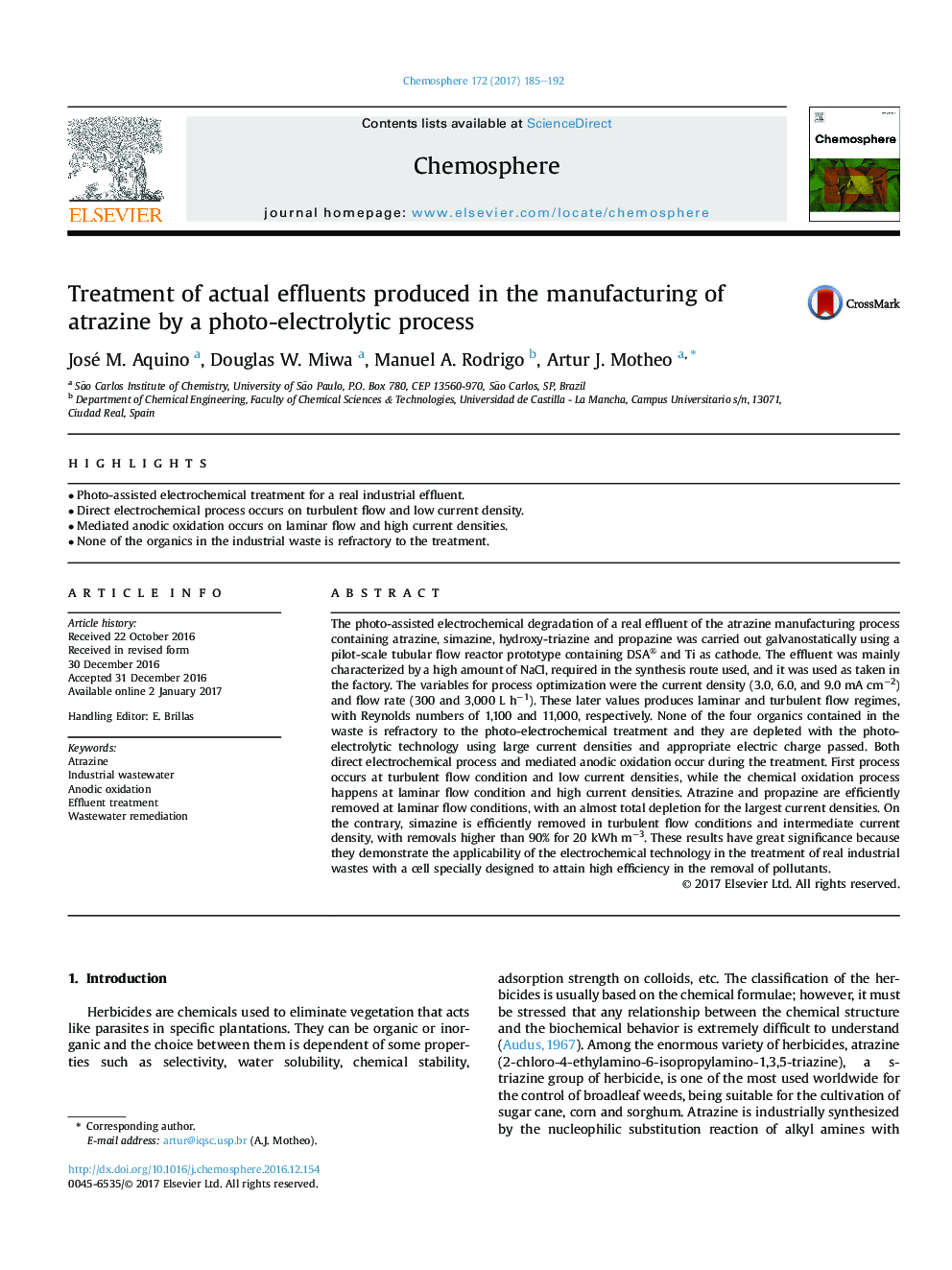| کد مقاله | کد نشریه | سال انتشار | مقاله انگلیسی | نسخه تمام متن |
|---|---|---|---|---|
| 5747101 | 1618799 | 2017 | 8 صفحه PDF | دانلود رایگان |
- Photo-assisted electrochemical treatment for a real industrial effluent.
- Direct electrochemical process occurs on turbulent flow and low current density.
- Mediated anodic oxidation occurs on laminar flow and high current densities.
- None of the organics in the industrial waste is refractory to the treatment.
The photo-assisted electrochemical degradation of a real effluent of the atrazine manufacturing process containing atrazine, simazine, hydroxy-triazine and propazine was carried out galvanostatically using a pilot-scale tubular flow reactor prototype containing DSA® and Ti as cathode. The effluent was mainly characterized by a high amount of NaCl, required in the synthesis route used, and it was used as taken in the factory. The variables for process optimization were the current density (3.0, 6.0, and 9.0Â mAÂ cmâ2) and flow rate (300 and 3,000Â LÂ hâ1). These later values produces laminar and turbulent flow regimes, with Reynolds numbers of 1,100 and 11,000, respectively. None of the four organics contained in the waste is refractory to the photo-electrochemical treatment and they are depleted with the photo-electrolytic technology using large current densities and appropriate electric charge passed. Both direct electrochemical process and mediated anodic oxidation occur during the treatment. First process occurs at turbulent flow condition and low current densities, while the chemical oxidation process happens at laminar flow condition and high current densities. Atrazine and propazine are efficiently removed at laminar flow conditions, with an almost total depletion for the largest current densities. On the contrary, simazine is efficiently removed in turbulent flow conditions and intermediate current density, with removals higher than 90% for 20Â kWh mâ3. These results have great significance because they demonstrate the applicability of the electrochemical technology in the treatment of real industrial wastes with a cell specially designed to attain high efficiency in the removal of pollutants.
Journal: Chemosphere - Volume 172, April 2017, Pages 185-192
